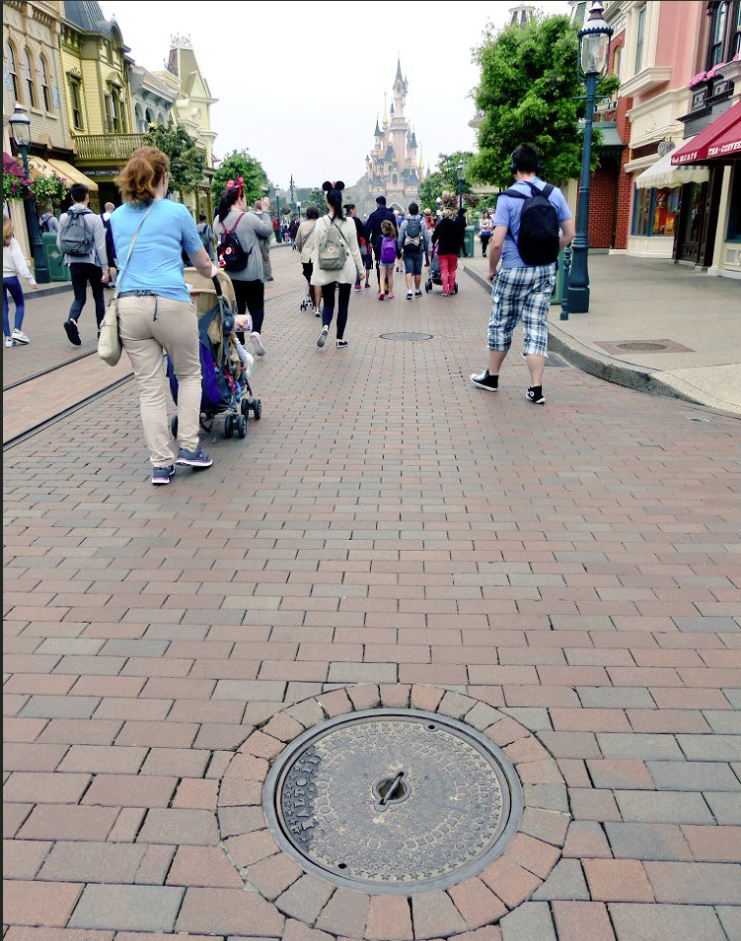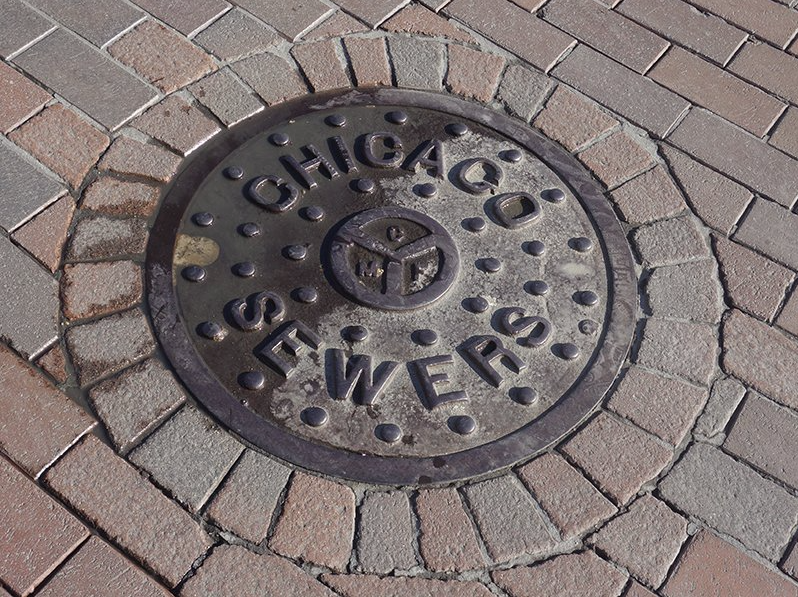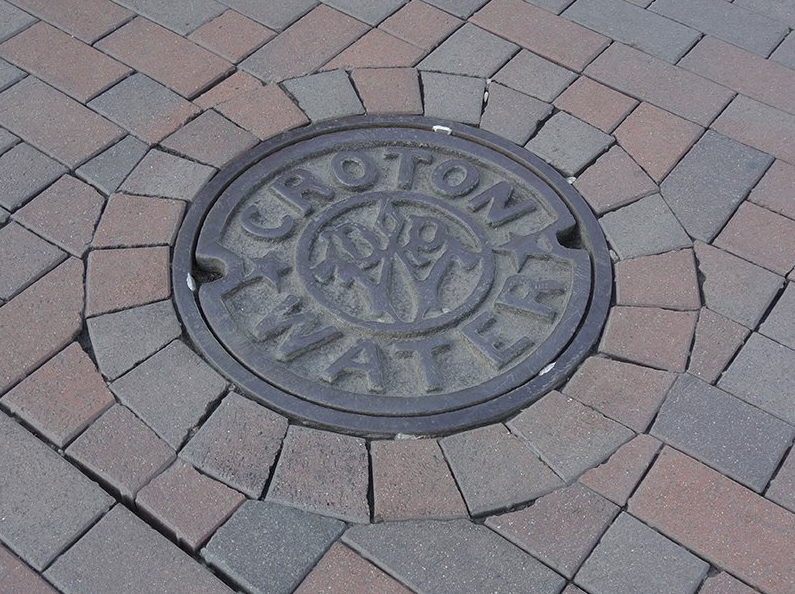Art underfoot. Guests find antique manhole covers from American cities.
Art in the Park. Stories told in layers.
Main Street USA for Disneyland Paris was designed to satisfy a European audience that was accustomed to living within "layers of history." Buildings in Europe have lived and still carry on many "lives," evolving to meet ever changing needs, yet sporting their 19th Century roots. Everywhere you look in your stroll down the streets of Paris, those layers of history stand out and remind you of another time just beneath the modern signage. People flock to the "city of lights" to experience those layers that were once called "La belle époque." Far from the mid-century suburban world of Anaheim, California, (the site of the original Disneyland,) our 19th Century "Main Street USA" needed to reward it's guests similarly with layer upon layer of it's own changes, gas lighting becoming electric, horses yielding to cars, etc. or it would feel hollow and insincere to this historically sophisticated audience.
Designing for the audience. Details in Context.
What would guests think if they saw our street of modern asphalt (as it was in Anaheim) when Paris still has it's cobblestones? Not a very credible representation of "turn of the century." What story could the street itself tell while waiting for an hour on the curb for the parade? In addition to making the street from brick pavers, we decided to go a step further with a tribute to those boulevards of the past. I had run across a book (Manhole Covers) that brought attention to the fact that even back in the 19th Century, manhole covers were a symbol of civic pride and stunning craft, so I asked our team create a small art installation of various antique american manhole covers for guests to discover right in the street. If the guest saw how we went to that length to embed detail, they'd assume everything had that level of thought.
Seen Below. In addition to the star-studded Baltimore Fire Dept. example, we installed covers from Chicago, New York's Croton Water (sporting a DWP intertwined logo), and the elaborate filagree adorning the Central City, Colorado cover. It was so pretty, we reproduced that one and used it in two locations! All of these spanned the late nineteenth century and are great examples of how cast iron was used in simple and decorative ways all at once. Story is where you find it.
Thanks to David Goebel for his images and research.





